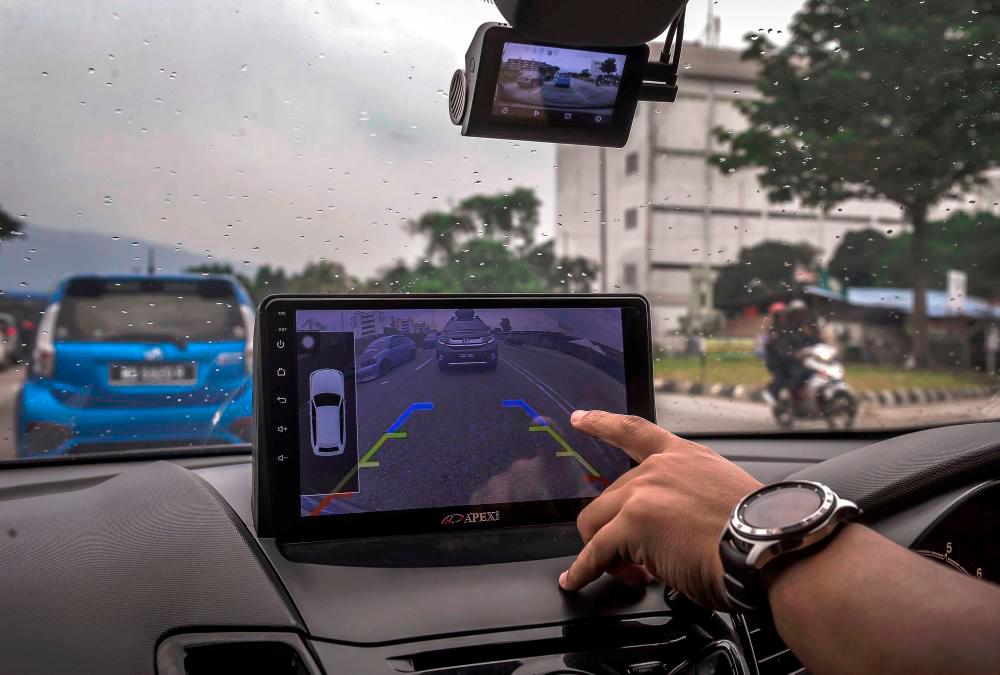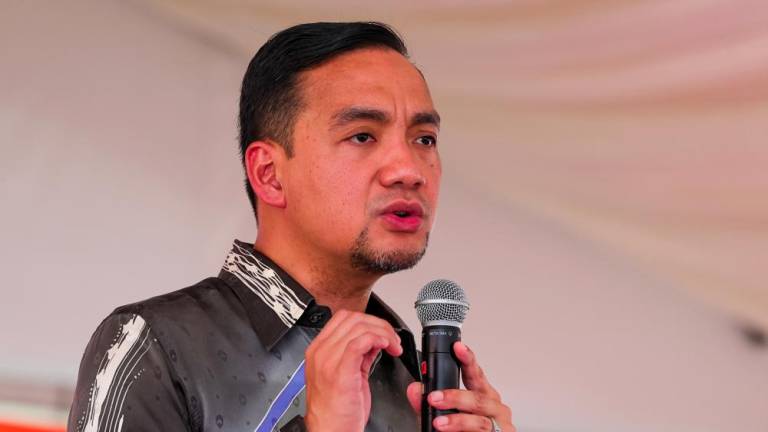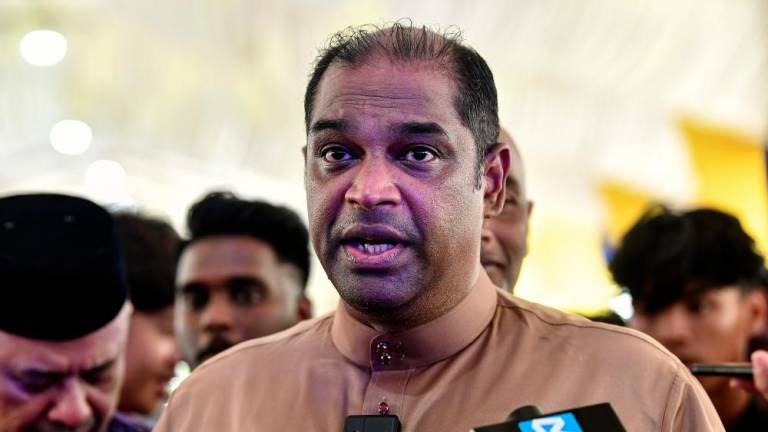A dashcam or a dashboard camera, which is also known as a car digital video recorder, driving recorder, or event data recorder, should become a compulsory tool or component inside all vehicles in Malaysia.
This small high tech device can assist us when we are confronted with any problems or issues while we are on the road by recording visuals.
Dashcams have advanced over the years into smaller, unassuming electronic devices that are easily mounted anywhere within a vehicle.
Drivers may opt to install dashcams in their vehicles for liability protection.
If the driver is involved in an accident or is accused of a crime, a lawyer may be able to use the footage from a dashcam as indisputable evidence to assist the driver with their legal battle in the court of law.
We can be exposed to many problems and issues while driving on roads such as traffic accidents, road bullying and harassment, encountering irresponsible drivers who drive under the influence of alcohol or drugs, road-related negligence cases, snatch thefts, sudden physical attacks and many more.
As a result, we need a device that can be used to assist us when we want to lodge a formal complaint or report with the authorities, for use in legal cases, insurance claims as well as demand any kind of compensation.
Using dashcams as evidence to help us with any legal battles in the court of law should not become an obstacle.
If we refer to Section 3 of the Malaysian Evidence Act 1950 (Act 56) it defines evidence as including: (a) all statements which the court permits or requires to be made before it by witnesses in relation to matters of fact under inquiry: such statements are called oral evidence; and (b) all documents produced for the inspection of the court: such documents are called documentary evidence.
It is crucial to note that the word “includes”, which has been used in this particular section of the Act when it defines the definition of evidence, means that we can bring in any items as evidence in order to support or substantiate our case in the court of law.
This view is based on the case of Chin Seow Noi v PP (1994) 1 SLR 135 where the court said that “The use of the single word ‘includes’ in our section 3 is clearly intended to make the definition of evidence in our Evidence Act an extensive one”.
The use of the word “includes” under Section 3 of the Act is intended to make the definition of evidence in the section extensive.
This means that the meaning of the word evidence in the section goes beyond the narrow statutory meaning explicitly set out.
A similar approach has also been adopted in other court cases as well such as the case of Dilworth & Ors v Commissioner of Stamps, (1899) AC 99, (1895-99) All ER Rep Ext 1576; Corporation of Portsmouth v Smith & Ors. (1883) 13 QBD 184; Abdul Rashid & Anor v PP (1994) 1 SLR 119; Lee Yuan Kwang & Ors v PP (1995) 2 SLR 349; PP v Rozmaan bin Jusoh & Anor (1999) 2 SLR 181 and Noliana Bte Sulaiman v PP (2000) 4 MLJ 752.
As such, evidence is not confined to a piece of oral evidence or a normal piece of documentary evidence only.
As long as the evidence tendered is relevant, strong and credible to our case, it can be accepted and admissible by the court of law.
This has been stated clearly under Section 5 of the Act and the variety of reported court cases like the case of PP v Haji Kassim (1971) 2 MLJ 115; Thavanathan a/l Subramaniam v PP (1997) 2 MLJ 401; DPP v Killbourne (1973) AC 729; R v Turner (1975) 1 ALL ER 70 and PP v Dato’ Seri Anwar Bin Ibrahim (1999) 2 MLJ 1.
Thus, we would be able to use a dashcam as a standalone piece of evidence to support or substantiate our legal battle in the court of law either in a civil or criminal case when the need arises.
It is important to highlight that a dashcam can also fall under the category of documentary evidence since the definition of documentary evidence provided by the Malaysian Evidence Act 1950 (Act 56) is extensive enough to include a dashcam.
Section 3 of the Act defines a document as any matter expressed, described or howsoever represented, upon any substance, material, thing or article, including any matter embodied in a disc, tape, film, soundtrack or other devices whatsoever, by means of:
(a) Letters, figures, marks, symbols, signals, signs, or other forms of expression, description, or representation whatsoever;
(b) Any visual recording (whether of still or moving images);
(c) Any sound recording, or any electronic magnetic, mechanical or other recordings whatsoever and howsoever made, or any sounds, electronic impulses, or other data whatsoever;
(d) A recording, or transmission, over a distance of any matter by any, or any combination, of the means mentioned in paragraph (a), (b), or (c) or by more than one of the means mentioned in paragraphs (a), (b), (c) and (d), intended to be used or which may be used for the purpose of expressing, describing, or howsoever representing, that matter.
Subject to the authentication process of documentary evidence provided under Section 61 until 66 of the Act, submission of a dashcam as documentary evidence could also help to build a legal case in the court of law.
Besides using it to deal with accident cases or any traffic or criminal issues, dashcams also provide many benefits like improving our driving safety.
A dashcam records all our driving excursions, so it is an easy way for us to review our safety habits and make adjustments if necessary.
Making these small changes could potentially save lives or prevent accidents in the future.
Dashcams also record everything regardless of whether we are in the vehicle.
As such, thieves will think twice about breaking in, knowing that 24 hours of footage will be uploaded to the cloud and reviewed at anytime.
In conclusion, dashcams are an inexpensive way to keep both the driver and passengers safe.
The time has come for us to review all our existing legislations, especially the Road Transport Act 1987 (Act 333) in order to make dashcams a compulsory tool or component in all our vehicles.
The government can consider requesting vehicle owners to install it inside their own vehicle.
However, to prevent problems or issues in terms of the financial burden of purchasing the device and its quality, the government should control the price and request the public to purchase only certain types of dashcam that are suitable to be used and installed inside their vehicle.
Besides requesting individual vehicle owners to spend their time, energy and money buying and installing these devices themselves, the government can also consider requesting car manufacturers to add dashcams as part of the vehicle they are producing to avoid the added burden on the public to install such devices by themselves.
Whatever plan we have towards achieving this, we should not undermine the importance of dashcams.
With so many accidents and criminal activities surrounding us and being reported recently, dashcams can become an important device and piece of evidence that can be used to help us and others when needed.
Muzaffar Syah Mallow is a senior lecturer in the Faculty of Syariah and Law at Universiti Sains Islam Malaysia (USIM). Comments: letters@thesundaily.com










